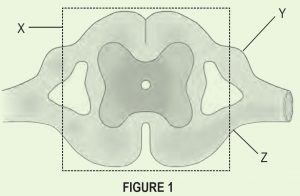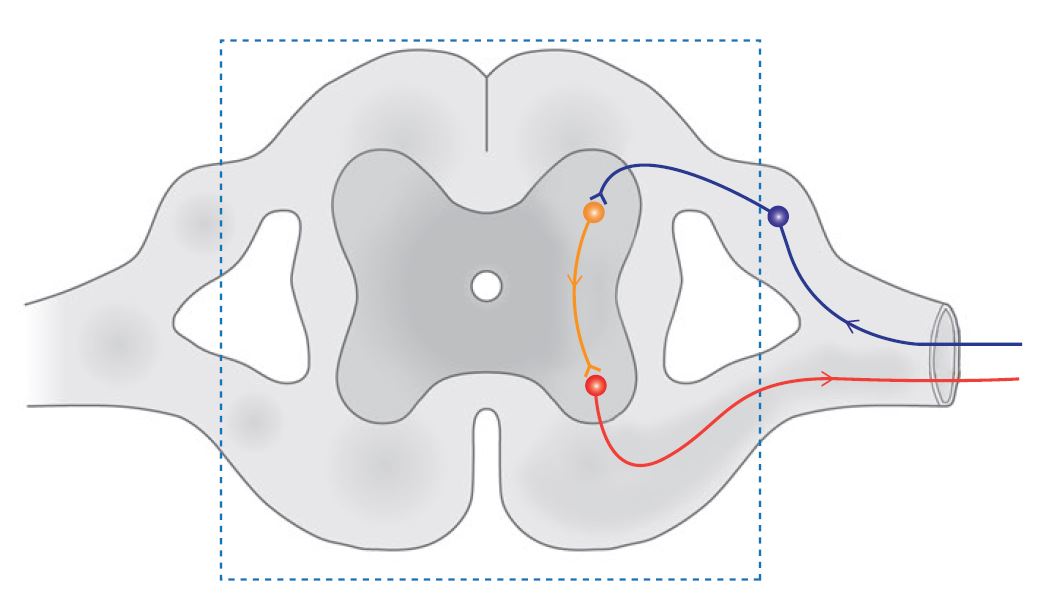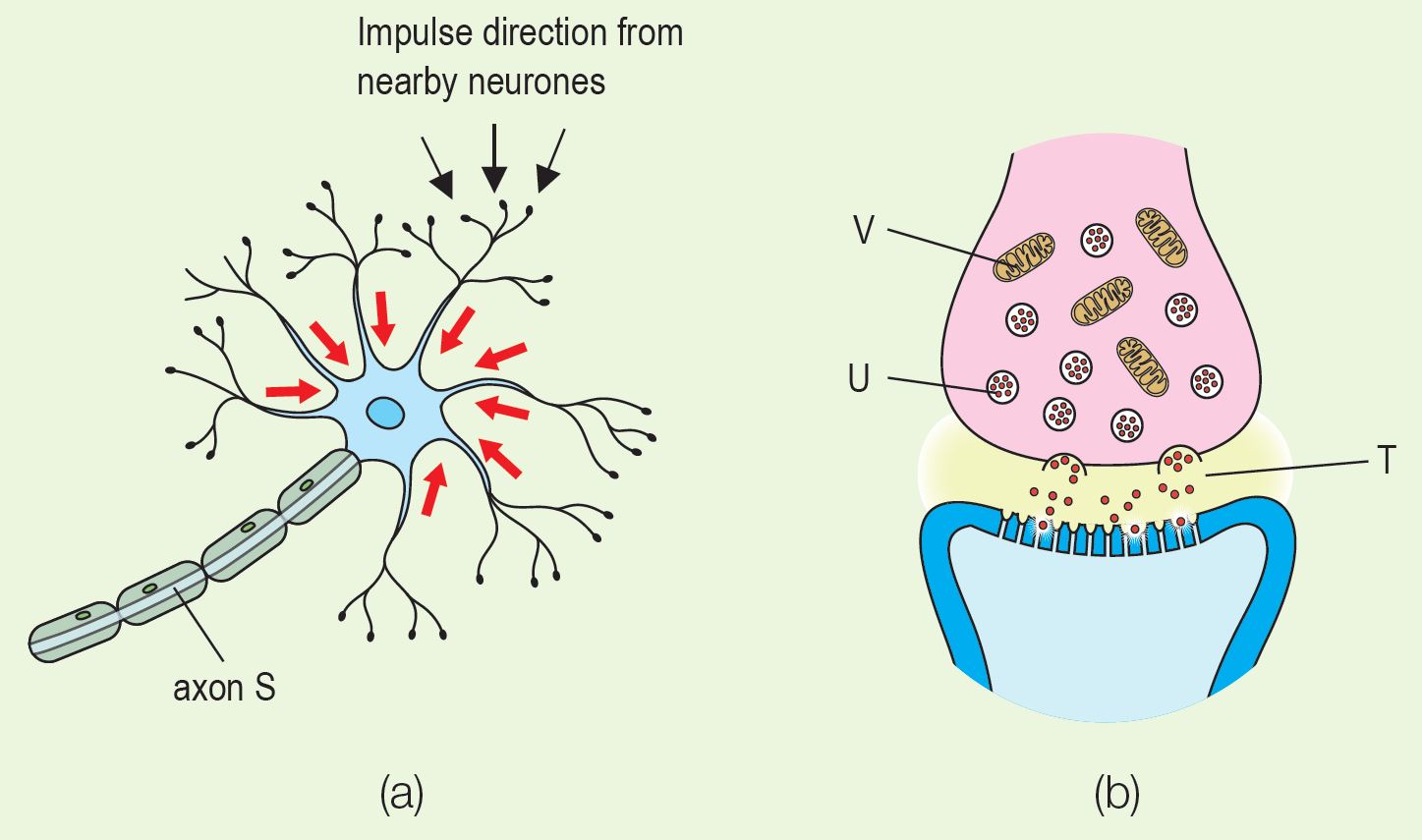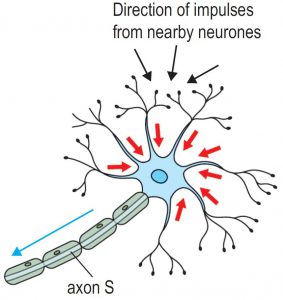Figure 1 shows the cross section of a part of the nervous system.

(a) (i) Name structure X.
(ii) State the function of structure X.
(b) Why is part Y swollen?
(c) Complete Figure 1 with neurones involved in a reflex action. Mark the direction of impulse on the neurone.
(d) If the spinal nerve is cut at Z, what is the effect on the organ that is connected to it? Explain why.
Answer:
(a)(i)
Spinal cord
(a)(ii)
X contains neurones to transmit impulses to and from the brain.
(b)
The cell bodies of sensory neurones are clustered in Y (dorsal root ganglion).
(c)
(d)
If the spinal nerve in Z is cut, the motor neurone will not be able to convey information to the effector (such as muscles and glands), and the effector will not be able to respond to the commands of the spinal cord.
Figure 2(a) shows part of a motor neurone and Figure 2(b) shows a cross section of a synaptic knob.

(a) Name the parts labelled V, T and U.
(b) Name the chemical substances in U.
(c) The synaptic knob contains a lot of V. What is the function of V?
(d) Draw an arrow that shows the direction of impulse flow along axon S.
(e) Explain
(i) why does the transmission of impulse involve the pathway of impulse through T.
(ii) how transmission of impulse occurs.
(f) Based on Figures 2(a) and (b), explain why transmission of impulse through a neurone occurs in one direction only.
Answer:
(a)
V – mitochondrion U – vesicle T – synapse
(b)
Neurotransmitter
(c)
Generate energy for electrical impulse transmission
(d)
(e)(i)
To continue the transmission of the electrical impulse to the next neurone upon reaching the synaptic knob
(e)(ii)
Synaptic vesicles secrete neurotransmitters that diffuse across the synapse and attach to the receptor proteins on the receiving neurone dendrite. The dendrite is then stimulated to trigger a nerve impulse that is carried by the receiving neurone to the effector.
(f)
Impulse transmission occurs in one direction only because after being secreted from the synaptic vesicles, neurotransmitters will move across the synapse, and fuse with the receptor of the next neurone. Therefore, impulse transmission takes place in one direction only.